Is 103 fever bad. Is a 103 Fever Dangerous? Understanding High Fevers and When to Seek Medical Care
How high does a fever need to be before it’s considered dangerous. What are the symptoms of a high-grade fever. When should you go to the ER for a fever. How are high fevers treated in emergency settings.
Understanding Fever: What It Is and Why It Occurs
Fever is a common physiological response that occurs when the body’s temperature rises above its normal range. For most adults, a normal body temperature falls between 97°F and 99°F, with 98.6°F generally accepted as the standard. When a person’s body temperature reaches 100.4°F or higher, they are considered to have a fever.
Why does the body develop a fever? It’s often a sign that the immune system is actively fighting off an invader, such as a virus, bacteria, or other pathogen. While uncomfortable, fever can actually be beneficial in helping the body combat infections.
Common Symptoms Accompanying Fever
- Sweating
- Chills
- Headache
- Body aches
- Fatigue
- Loss of appetite
Causes of Fever: From Common Illnesses to Serious Conditions
Fevers can arise from various sources, ranging from mild infections to more severe medical conditions. Understanding the potential causes can help in determining the appropriate course of action.

Common Causes of Fever
- Viral infections (e.g., common cold, flu)
- Bacterial infections
- Stomach bugs
- Recent vaccinations
- Heat exhaustion
Are all fevers caused by infections? While infections are a common cause, fevers can also result from other factors such as certain medications, autoimmune disorders, or even some cancers. It’s important to consider the context and accompanying symptoms when evaluating a fever.
The Duration of Fevers: What to Expect
The length of time a fever persists can vary greatly depending on its underlying cause, the individual’s overall health, and the treatment approach. For common illnesses like the flu, most people experience an elevated temperature for about 2-4 days.
Can a fever last for weeks? In some cases, yes. Prolonged fevers that last for several weeks are known as fever of unknown origin (FUO) and may require extensive medical investigation to determine the cause.
High-Grade Fevers: When Does Temperature Become Concerning?
While low-grade fevers are often manageable at home, high-grade fevers can be more serious and may require medical attention. But at what point does a fever become “high-grade”?

Is a 103°F fever dangerous? A fever of 103°F or above is indeed considered high-grade and should be treated promptly. Such high temperatures can lead to complications if left unchecked, especially in children and the elderly.
Risks Associated with High-Grade Fevers
- Dehydration
- Confusion or delirium
- Seizures (particularly in young children)
- Metabolic imbalances
How does the body respond to extremely high temperatures? As fever increases, the body’s metabolic rate accelerates, potentially leading to rapid breathing, increased heart rate, and in severe cases, organ stress.
When to Seek Emergency Care for a Fever
While many fevers can be managed at home, certain situations warrant immediate medical attention. Recognizing these scenarios can be crucial for preventing complications and ensuring timely treatment.
Signs That Indicate a Need for Emergency Care
- Fever of 103°F or higher
- Confusion or altered mental state
- Severe pain (e.g., abdominal pain, headache, muscle pain)
- Difficulty breathing or chest pain
- Persistent vomiting or inability to keep fluids down
- Seizures
- Skin rash or severe skin changes
Are there special considerations for infants and young children? Absolutely. For infants under 3 months, any fever should be evaluated by a healthcare provider immediately. For older children, a fever lasting more than 3-4 days or accompanied by concerning symptoms should prompt medical attention.

Emergency Room Treatment for High Fevers
When a patient arrives at the emergency room with a high fever, the medical team’s primary goals are to identify the underlying cause, reduce the fever, and address any complications. The treatment approach may vary depending on the severity of the fever and associated symptoms.
Typical ER Protocol for Fever Evaluation
- Comprehensive physical examination
- Detailed medical history
- Vital sign measurements
- Laboratory tests (e.g., blood work, urine analysis)
- Imaging studies if necessary (e.g., chest X-ray, CT scan)
What treatments are commonly used for high fevers in the ER? Depending on the cause and severity, treatments may include:
- Intravenous fluids to prevent or treat dehydration
- Antipyretic medications (e.g., acetaminophen, ibuprofen) to reduce fever
- Antibiotics if a bacterial infection is suspected or confirmed
- Antiviral medications for certain viral infections
- Cooling measures for extremely high fevers
Home Care for Fevers: When and How to Manage
For low-grade fevers in otherwise healthy individuals, home care can often be sufficient. Understanding how to manage fevers at home can help alleviate discomfort and support the body’s natural healing process.

Effective Home Remedies for Fever
- Rest and sleep to support the immune system
- Hydration with water, clear broths, or electrolyte solutions
- Cool compresses on the forehead, wrists, and back of the neck
- Light, breathable clothing and comfortable room temperature
- Over-the-counter fever reducers (following dosage instructions carefully)
Is it always necessary to lower a fever? Not necessarily. Mild fevers (below 102°F) in adults often don’t require treatment unless accompanied by discomfort. The fever itself can help the body fight off infections more effectively.
Special Considerations for Fevers in Different Age Groups
The approach to managing fevers can vary significantly depending on the age of the individual. What might be considered a mild fever in an adult could be more serious in an infant or elderly person.
Fever in Infants and Young Children
For babies under 3 months, any fever (100.4°F or higher rectally) is considered an emergency and requires immediate medical attention. In older infants and toddlers, fevers should be closely monitored and evaluated based on accompanying symptoms and duration.

Fever in Adults
Healthy adults can typically tolerate fevers up to 103°F without complications. However, persistent high fevers or those accompanied by severe symptoms should be evaluated by a healthcare provider.
Fever in the Elderly
Older adults may not develop fevers as readily as younger individuals, even when fighting infections. Therefore, even a low-grade fever in an elderly person should be taken seriously and may warrant medical evaluation.
How does the immune response change with age? As we age, our immune system becomes less robust, which can affect both the development of fevers and the body’s ability to fight off infections effectively.
The Role of Fever in Fighting Infections
While fevers can be uncomfortable and concerning, they play a crucial role in the body’s defense against pathogens. Understanding this function can help alleviate some of the anxiety surrounding fevers.
Benefits of Fever in Immune Response
- Increased production of white blood cells and antibodies
- Enhanced mobility of immune cells
- Creation of an inhospitable environment for some pathogens
- Activation of the body’s acute phase response
Does artificially lowering a fever hinder the body’s ability to fight infection? While fever reducers can provide comfort, some studies suggest that lowering fever might slightly prolong illness duration in certain cases. However, the benefits of reducing discomfort often outweigh this potential drawback, especially in high fevers.

Preventing Complications from High Fevers
While most fevers resolve without incident, high-grade fevers can sometimes lead to complications if not properly managed. Being aware of potential risks and taking appropriate preventive measures is key to ensuring the best outcomes.
Strategies to Prevent Fever-Related Complications
- Maintaining proper hydration
- Monitoring fever trends and associated symptoms
- Adhering to recommended treatment plans
- Seeking timely medical attention when warranted
- Taking precautions to prevent the spread of infectious illnesses
Can fever cause brain damage? It’s a common concern, but fever-induced brain damage is extremely rare and typically only occurs with extremely high fevers (over 107.6°F) or in cases of heat stroke. The body has protective mechanisms to prevent such extreme temperatures under normal circumstances.
Technological Advancements in Fever Monitoring and Management
As medical technology continues to evolve, new tools and methods for monitoring and managing fevers are emerging. These advancements are changing the way both healthcare providers and individuals approach fever care.

Innovative Fever Management Technologies
- Smart thermometers with smartphone integration
- Continuous temperature monitoring patches
- AI-powered symptom checkers
- Telemedicine platforms for remote fever evaluation
How are these technologies impacting fever management? These innovations are enabling more precise temperature tracking, easier data sharing with healthcare providers, and improved access to medical advice, potentially leading to earlier interventions and better outcomes.
The Future of Fever Treatment and Research
As our understanding of the immune system and fever response continues to grow, new approaches to fever management are on the horizon. Researchers are exploring novel treatments and diagnostic methods that could revolutionize how we handle fevers in the future.
Emerging Areas in Fever Research
- Targeted immunomodulatory therapies
- Personalized fever management based on genetic profiles
- Advanced biomarkers for early infection detection
- Nanotechnology-based temperature regulation
What potential breakthroughs are on the horizon for fever treatment? While it’s difficult to predict specific outcomes, ongoing research into the complex interplay between fever, immune response, and various pathogens may lead to more targeted and effective treatments for fever-inducing conditions.

In conclusion, while a 103°F fever is indeed considered high and warrants careful attention, understanding the broader context of fever—its causes, management, and role in the immune response—is crucial for appropriate care. Whether dealing with a mild temperature elevation or a high-grade fever, being informed about when to seek medical attention and how to provide proper care can make a significant difference in outcomes. As research continues and technology advances, our approach to fever management will likely become even more sophisticated, offering new hope for improved patient care and outcomes.
How To Know If You Should Go To The ER For A Fever
If you are otherwise healthy and alert, having a low-grade fever may not necessarily be cause for concern. However, an elevated temperature can be indicative of another process or illness that needs to be treated. A severe or prolonged fever can even cause complications on its own. Because there are a number of possible causes of fever, many of which trigger a similar set of symptoms, it can be challenging to self-diagnose your condition. The expert team of board-certified physicians at both of iCare ER & Urgent Care’s convenient locations in Frisco and Fort Worth, TX provides prompt and reliable evaluation, diagnosis, and treatment for patients presenting with fever. Find out more about the possible causes of fever here, and learn what situations may warrant a visit to the ER for fever.
What is a fever?
For most adults, a normal body temperature is between 97°F and 99°F, though 98.6°F is generally accepted as the standard of normal. When a patient’s body temperature becomes elevated to 100.4°F or higher, he or she is considered to have a fever. Oftentimes, a fever indicates that the body is fighting off a virus, infection, or another pathogen. Common symptoms of a fever include:
When a patient’s body temperature becomes elevated to 100.4°F or higher, he or she is considered to have a fever. Oftentimes, a fever indicates that the body is fighting off a virus, infection, or another pathogen. Common symptoms of a fever include:
- Sweating
- Chills
- Headache
- Body aches
- Fatigue
- Loss of appetite
What causes a fever?
There are a variety of potential reasons why a person’s body temperature may become elevated, either temporarily or for several days or weeks. Some of the most common causes of a fever include:
- Virus
- Infection
- Cold and/or flu
- Stomach bug
- Recent vaccination
- Heat exhaustion
How long does a fever last?
Depending on the cause of the fever, the patient’s overall health, what treatments are given, and other factors, a fever can last anywhere from several hours to several weeks.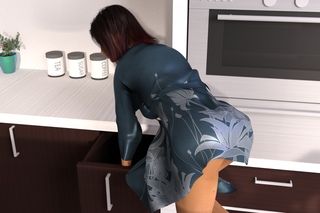 For some of the most common illnesses, such as the flu, most people demonstrate an elevated temperature for about 2 – 4 days.
For some of the most common illnesses, such as the flu, most people demonstrate an elevated temperature for about 2 – 4 days.
How high is too high for a fever?
Fever of 103°F or above is considered high grade and should be treated immediately. However, even a low-grade fever may be a sign of a dangerous problem for infants and babies. If you are concerned about fever in your infant, your child, or yourself, visit your nearest Fort Worth or Frisco emergency room within iCare ER & Urgent Care’s unique dual-hybrid facility.
When should you go to the ER for a fever?
For patients who are otherwise healthy, alert, and have an obvious explanation for their low-grade fever – such as a cold – at-home remedies and monitoring may be sufficient. However, any fever above 103°F should be treated immediately in the ER. In addition, if you or your child are experiencing any of the following symptoms in conjunction with a fever, a trip to the ER is warranted:
- Confusion
- Severe pain (abdominal pain, headache, muscle pain, etc.
 )
) - Sensitivity to light
- Skin rash or irritation
- Protracted nausea or vomiting
- Inability to eat or drink
- Difficulty breathing
- Chest pain
- Seizure
- Inability to stay awake
- Fever of 103°F or higher
- Fever lasting longer than 3 – 4 days (children)
- Any fever (infants)
How is a fever treated in the ER?
To determine the cause of your fever, one of our board-certified ER physicians in Frisco or Fort Worth will perform a thorough examination, take a detailed health history, measure certain vital signs, and possibly draw laboratory studies. Depending on the severity of your condition, the cause of your fever, and other factors, your physician will recommend the most appropriate course of treatment, which may include antibiotics, other medications, fluids, and rest.
Get prompt treatment and rapid relief for your fever by visiting your nearest emergency room in Frisco or Fort Worth, TX
Although some fevers can be treated at home, many cases of fever may indicate a serious problem and should be evaluated immediately. If you are concerned about a high-grade fever or any fever that is accompanied by abnormal or protracted symptoms, visit your nearest iCare ER & Urgent Care center in either Fort Worth or Frisco, TX to be evaluated by one of our professional board-certified physicians for your acute illness and to get the effective treatment and rapid relief you deserve.
If you are concerned about a high-grade fever or any fever that is accompanied by abnormal or protracted symptoms, visit your nearest iCare ER & Urgent Care center in either Fort Worth or Frisco, TX to be evaluated by one of our professional board-certified physicians for your acute illness and to get the effective treatment and rapid relief you deserve.
How High is Too High? A Guide to Kids’ Fevers (2021 Update)
Throughout your child’s life, one of the most common and worrisome issues that can come up is a fever. You know how the signs begin: chills, a warmer body, and flushed cheeks; but what does your child’s fever mean?
No matter how well or badly your child is feeling, a fever can be a sign that something isn’t quite right. When a fever comes around, that means your child’s body is reacting to an infection or virus; a fever is a sign that your child’s body is fighting back! Even though fevers are a sign of healthy bodies reacting to illness, they definitely can make your child feel lousy.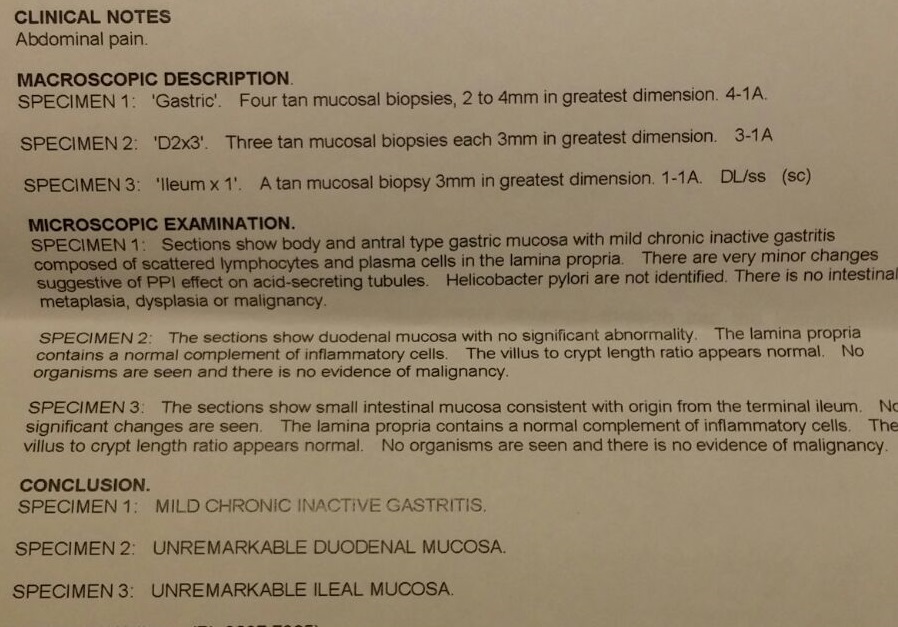
READ MORE: Guide to Setting Sleep Schedules for Kids
Especially for our youngest patients, who can’t easily say what hurts or that they feel sick, a fever is a clear indicator that they are experiencing sickness or pain. Even as children age, fevers, combined with other symptoms, can be dangerous and must be met with quick medical attention.
But the question remains: what do I do about my child’s fever? With our easy guide below, we help you navigate the highs and lows of fevers, and how to react along the way. As always, contact your pediatrician for specific medical advice for your child. For a general guide to cold and flu season, follow along below:
Best Way to Check a Child’s Temperature
Depending on your child’s age, their temperature can be taken differently, using different thermometers. The fastest and most accurate of all the different kinds of thermometers is the digital thermometer. Most doctors recommend using digital thermometers versus other kinds.
For infants under 3 months of age, the most effective and accurate way to check temperature is rectally, using a digital thermometer. There are two ways to easily take a rectal temperature. With the face down method, place a blanket on your lap, and then lay your baby across your lap, facing downwards. Take your baby’s temperature by using petroleum jelly to insert the thermometer; hold it for 3 minutes to allow the temperature to register. You can also take your baby’s temperature by laying them face up on a firm surface and holding their legs up, with their knees towards their chest. Then proceed to insert the thermometer and get a reading.
You can also take your baby’s temperature under the armpit with a digital thermometer. While not as accurate, this will allow you to get a general idea of if your child has a fever or not. Most daycares and schools will use this method as a general guide if your child has symptoms of being sick.
Fever strips and pacifier thermometers are not usually recommended, as they tend to not be as accurate. We also discourage parents from using glass thermometers, as the mercury inside can poison your child if they are exposed to it.
We also discourage parents from using glass thermometers, as the mercury inside can poison your child if they are exposed to it.
READ MORE: Guide to Cough Season – What Kind of Cough Does My Child Have?
For older children, you can use a variety of thermometers. The most popular is the digital thermometer, but there are also ones that get a reading by being inserted into the ear or pressed against the forehead. The most accurate way of taking the temperature of an older child is by using a digital thermometer under the tongue. This should be used after your child is 4 years old.
Be aware of what your child has just eaten or had a warm or cold drink when you take their temperature. For example, if your child has a sore throat and just had some soup to ease the pain, wait about 20 minutes for your child to reach his or her resting temperature for the most accurate temperature reading.
Have a Fever? When to Call Your Pediatrician
Depending on your child’s age, there can be different degrees of worry when it comes to fevers. Here is a quick guide for when it is time to call Pediatrics East:
Here is a quick guide for when it is time to call Pediatrics East:
- If your child is under three months old, any fever should be addressed. If his or her temperature is above 100.4 degrees, it is time to call us.
- For children ages three months to three years, call us if there is a fever of 102 degrees or higher.
- For all kids three years and older, a fever of 103 degrees or higher means it is time to call Pediatrics East.
- If a fever of 102 degrees or higher lasts for more than two days, please give us a call, too.
Age | When to See the Pediatrician |
Newborn – 3 Months | 100.4 Degrees or Higher |
3 Months – 3 Years | 102 Degrees or Higher |
3 Years and Older | 103 Degrees or Higher |
Any Age | 102 Degrees or Higher for More than 2 Days |
Along with these guidelines, it is important to call Pediatrics East if your baby has not received immunizations and has a fever. Also, please call your pediatrician if your child experiences excessive vomiting or diarrhea, if your child seems dehydrated, or if a serious rash is present with the fever.
Also, please call your pediatrician if your child experiences excessive vomiting or diarrhea, if your child seems dehydrated, or if a serious rash is present with the fever.
READ MORE: Does My Child Have Allergies or a Cold?
If your child is experiencing more severe symptoms with their fever, it does make sense to skip calling Pediatrics East and head to the emergency room. Go to the emergency room in the following circumstances:
- Your child is not breathing or has trouble breathing
- Severe abdominal pain
- Your child has a seizure
- Your child has any other apparent problems, such as swelling or trouble swallowing
Low-grade Fever? What to Do Now
If your child (age six months and older) has a fever that registers above 100.4 degrees and below 102 degrees, you are in a bit of an in-between zone for the first couple of days. While it isn’t necessary to bring your child to Pediatrics East, you will need to keep your child home from daycare or school.
If there are other symptoms in addition to their fever, such as a sore throat, bad cough, or other issues, be sure to monitor the temperature every few hours. If his or her fever begins to rise, it can be a sign of an infection or virus that might need immediate attention. As mentioned above, if a fever persists for several days, give us a call.
Here are the steps you can take to help lower a fever:
- Give Tylenol (infant or kid variety, depending on their age).
- Take a lukewarm bath (not a cold or ice water bath) or a sponge bath.
- Give plenty of fluids, such as water and juices.
- Make sure your child gets plenty of rest.
No Fever, but Still Sick?
Does your child not have a fever, but still appears sick? Monitor his or her symptoms and temperature to determine whether the sickness is getting worse. The best thing you can do for your child is to keep fluids going, feed comforting foods, give lots of love, and call us if symptoms persist or worsen. To get a better idea of what may be bothering your child, check our Child Illnesses pages to learn more about what your child could be experiencing. Of course, you can always call our office to talk through any concerns or worries you have.
To get a better idea of what may be bothering your child, check our Child Illnesses pages to learn more about what your child could be experiencing. Of course, you can always call our office to talk through any concerns or worries you have.
More Resources
- Guide to Cough Season
- Guide to Ear Infections and Ear Aches
- Tips for Soothing a Fussy Baby
- Bath Time Safety for Kids
- Flu vs. COVID-19
Fever – Humanitas
Fever is usually a signal that something is wrong in the body. In an adult, fever is accompanied by malaise, however, as a rule, a temperature increase of no more than 103 F (39.4 C) is considered harmless. In children of the first days of life and infants, even a slight increase in temperature may indicate the presence of a serious infection.
However, the severity of the fever does not always indicate the severity of the underlying condition. A mild illness may cause a fever with a significant increase in temperature, and a severe illness may be accompanied by a slight increase in temperature.
The fever usually resolves within a few days. A number of over-the-counter drugs can lower a fever, but in some cases it is better not to lower it. An increase in body temperature greatly contributes to the body’s fight against a number of infectious diseases.
Symptoms
Fever is an increase in temperature above normal values. The temperature normal for an individual may be slightly above or below the average normal temperature 98.6 F (37 C).
Fever, depending on the cause, may be accompanied by signs and symptoms such as:
- Sweating
- Trembling
- Headache
- Muscle pain
- Loss of appetite
- Dehydration
- General weakness
Fever 103 F (39.4 C) to 106 F (41.1 C) may cause:
- Hallucinations
- Confusion
- Irritability
- Convulsions
- Dehydration
Conditions requiring medical attention
Fever in itself is not a cause for concern and a reason to seek medical attention. However, there are times when, if you have a fever, you need to see a doctor yourself or take your child to the doctor.
However, there are times when, if you have a fever, you need to see a doctor yourself or take your child to the doctor.
Temperature measurement
Several types of thermometers are suitable for taking your own and your baby’s temperature, including oral, rectal, and ear (tympanic) thermometers.
Although not the most accurate method, an oral thermometer can be used to measure armpit temperature (axillary temperature).
- Place the thermometer in the armpit and cross your arms over your chest.
- Wait four or five minutes. Axillary temperature is slightly lower than oral.
- The doctor who came on call must be informed of the actual readings of the thermometer and name the place where the temperature was taken.
A rectal thermometer is suitable for measuring temperature in young children:
- To do this, grease the bulb of the thermometer with petroleum jelly.
- Place the baby on the stomach.

- Carefully insert the bulb of the thermometer half a centimeter into the child’s rectum.
- Hold the thermometer and child still for three minutes.
- Never let go of the thermometer while it is in the child’s body. If the child wriggles, the thermometer may go deeper and cause damage.
Infants
Unlike adults, unexplained fever in children is a serious cause for concern. If your child’s temperature rises to 101 F (38.3 C) or more, contact your pediatrician. You should also call a doctor in the following cases:
- Fever in a child under 3 months old.
- Refusal of the child to eat and drink.
- Fever and unexplained irritability: the child cries a lot, for example when changing a diaper or at the slightest movement.
- Lethargy and lack of reaction in a child with fever. In infants and children under 2 years of age, these signs may be signs of meningitis, an infection and inflammation of the membranes and fluid surrounding the brain and spinal cord.
 If meningitis is suspected, the child should be seen by a doctor immediately.
If meningitis is suspected, the child should be seen by a doctor immediately. - The body temperature of the newborn is below normal – below 97 F (36.1 C). In the youngest children, during illness, body temperature is difficult to regulate: it may fall rather than rise.
Children
If a child has a fever, but still reacts to others: makes eye contact, responds to facial expressions and voice, then there is probably nothing to worry about.
In the following cases, the child should be taken to the doctor:
- Lethargy or irritability, frequent vomiting, severe headaches or abdominal pain, or any other symptoms that cause severe discomfort.
- Fever after being in a hot car. Seek immediate medical attention if:
- Fever persists for more than one day (in children under 2 years of age) or more than three days (in children 2 years of age and older)
In special cases, for example, if the child has diseases associated with disorders of the immune system or any pre-existing diseases. Doctors also advise caution if a child has recently been prescribed a new drug.
Doctors also advise caution if a child has recently been prescribed a new drug.
Adults
Seek medical attention if:
- Temperature rises above 103 F (39.4 C)
- Persistence of fever for more than three days
In addition, seek immediate medical attention if any of the following signs or symptoms accompany a fever:
- Severe headache
- Severe swelling of the throat
- Unusual skin rash, especially if it progresses rapidly
- Unusual sensitivity to bright light
- Stiff neck and pain when bending head forward
- Confusion
- Prolonged vomiting
- Labored breathing or chest pain
- Extreme lethargy or excitability
- Abdominal pain or pain when urinating
- Other unexplained signs and symptoms
Complications
Fever may be accompanied by the following complications:
- Severe dehydration
- Hallucinations
- Fever-induced convulsions (febrile convulsions) in a small number of children aged 6 months to 5 years
- Febrile convulsions
Febrile seizures are usually accompanied by loss of consciousness and convulsions of the limbs, involving muscle groups on both sides of the body. Although febrile seizures are a cause of concern for parents, in most cases they do not have any long-term consequences.
Although febrile seizures are a cause of concern for parents, in most cases they do not have any long-term consequences.
If a febrile seizure occurs:
- Place the child on its side or stomach on the floor or other flat surface
- Remove all sharp objects within reach of the child
- Rid the child of tight clothing
- Hold the child to avoid injury.
Do not put anything in the child’s mouth or try to stop seizures
In most cases, seizures go away on their own. After the seizures stop, it is necessary to show the child to the doctor as soon as possible to determine the cause of the fever.
If convulsions persist for more than 10 minutes, seek emergency medical attention.
Herpes (colds on the lips)
Herpes on the lips has several names: “cold” on the lips, fever on the lips, herpes of the lips, herpes labialis, labial or labial herpes.
“Cold” on the lips, mainly caused by herpes simplex virus type I (HSV-I) .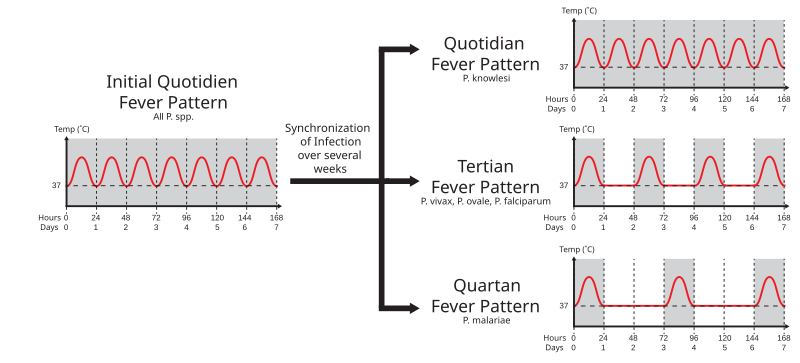 95% of people have this virus in their body. In rare cases, the cause of herpes lips is the herpes simplex virus type 2, (transmitted through oral sex).
95% of people have this virus in their body. In rare cases, the cause of herpes lips is the herpes simplex virus type 2, (transmitted through oral sex).
The herpes simplex virus, which causes a “cold” on the lips, remains inside the human body for life. At the moment, no medicines and treatments have been developed that would completely destroy the herpes simplex virus in the human body.
Up to 10,000,000 Russians annually suffer from “colds” on the lips. Approximately every 5 Russians get herpes of the lips from 2 to 10 times a year. And only about 5% of the human race has immunity to HSV-I, the reasons for which are still unclear.
The virus enters the body in early childhood: at 3-4 years old, when the antibodies against the herpes virus transmitted to the baby by the mother are depleted. Most often, infection occurs if the child is kissed by carriers of the infection. For example, parents, brothers, sisters and other relatives. In addition to a kiss, the virus can enter the body along with the biological fluids of others, for example, with saliva.
In addition to a kiss, the virus can enter the body along with the biological fluids of others, for example, with saliva.
Having come to visit us, it penetrates into the mucous membranes, reaches the nerve endings. Through them, with a current of fluid that feeds the nerves, it rises into the cranial cavity, where it “hides” in the nerve plexus, called, by the trigeminal ganglion and “sleeps” there until it is reactivated.
Reactivation of the virus is possible at the moment when immunity “decreases”. “Decrease” in immunity can occur under the influence of: colds, flu, menstruation, emotional distress and stress, strong ultraviolet radiation, excessive alcohol consumption, indigestion and fatigue.
Causes of recurrence of herpes on the lips:
– Stress or emotional disorder;
– Various somatic diseases, in particular colds, flu, diabetes, HIV;
– Poisoning or intoxication;
– Alcohol, caffeine and smoking;
– Excessive ultraviolet exposure;
– Hypothermia or overheating;
– Coming of menstruation;
– Overwork and exhaustion;
– Malnutrition/diet or indigestion;
– Other individual factors;
After “awakening” the virus is sent to the nerves (like a train on rails) from the trigeminal ganglion back to the skin. It is important to know that branches that innervate the lips, oral mucosa, gums, skin on the earlobe and part of the cheek depart from the trigeminal plexus. In accordance with the outgoing nerves, lesions on the skin will also be located. As it passes through the nerve, the virus causes inflammation of the nerve tissue, which causes pain along the course of the nerve fiber.
It is important to know that branches that innervate the lips, oral mucosa, gums, skin on the earlobe and part of the cheek depart from the trigeminal plexus. In accordance with the outgoing nerves, lesions on the skin will also be located. As it passes through the nerve, the virus causes inflammation of the nerve tissue, which causes pain along the course of the nerve fiber.
Stages of development of the “cold” on the lips
In its development, the disease goes through stage IV:
Stage I – tingling.
At this time, most people feel that they are getting sick. Before a “cold” appears, the skin at the corners of the mouth or the inside of the lips, or on the tongue, or even all over the face begins to itch.
In a place where a recurrence of herpes will soon develop, harbingers of the disease appear: pain, tingling, tingling, itching. The skin over the site of the future relapse turns red.
The development of the disease can be prevented if drugs based on acyclovir (Zovirax ointment) are used at this stage. If you suffer from severe itching, you can take an aspirin or paracetamol tablet.
Stage II – the stage of inflammation, begins with a small painful vesicle, which gradually increases in size. The bubble is tense and filled with a clear liquid, which later becomes cloudy.
Stage III – stage of ulceration. The bubble bursts, and a colorless liquid flows out of it, stuffed with billions of viral particles. In its place, an ulcer is formed.
At this point, the sick person is highly contagious, as they release a huge amount of viral particles into the environment. Because of the soreness and sores on the face, people are most annoyed by this stage.
IV stage eschar formation. A crust forms over the sores, if damaged, pain and bleeding can occur.
Herpes rashes are most often located on the red border of the lips, but can also be on the nose, on the cheeks, in the ears, on the forehead, in the oral cavity: on the gums, the inner surface of the lips and cheeks.
Complications of the “cold” on the lips
If personal hygiene rules are not followed, the virus can affect other parts of the body: if you rub your eyes with your hands after touching the blisters or sores, you can provoke ophthalmic herpes 9 0004 or herpes eye – severe eye damage, sometimes leading to decreased vision and even blindness. Herpetic eczema may develop – a virus infection of the skin of the fingers.
If you kiss someone with ulcerated lips, you can pass the infection to the child or loved ones.
Oral sex with a partner with an active “cold” on the lips can lead to “ genital herpes “. Those. during an outbreak of a “cold” on the lips, herpes can be mechanically transferred from the lips of an “active” sexual partner in oral sex to the genitals of the recipient of oral caresses.
This is how patient M. describes the severe course of herpetic infection on the lips: He is very worried about headaches and intoxication, as a rule, for no apparent reason, symptoms of severe poisoning appear. Tablets from the “head” help with difficulty, more or less saves an injection of analgin with diphenhydramine. Not a single doctor even wanted to talk about a headache and listen .”
Tablets from the “head” help with difficulty, more or less saves an injection of analgin with diphenhydramine. Not a single doctor even wanted to talk about a headache and listen .”
In people with reduced immunity (immunosuppression, HIV infection), necrotic forms of the course with the formation of scars on the skin are possible. 4.” Colds are contagious! Always wash your hands with soap and water before and after touching cold sores, including after applying antiviral cream.
– Do not touch your eyes! Especially women during makeup;
– Do not use saliva to wet contact lenses.
– Despite itching and pain, do not touch rashes, kiss, especially with children, use someone else’s lipstick or borrow your own, smoke one cigarette with a friend (girlfriend).
– Do not attempt to remove blisters or crusts to avoid transmission of infection to other parts of the body or bacterial infection.
– Stop oral sex! Oral sex during a “cold” on the lips of an “active” partner can cause genital herpes in a partner who is passively participating in oral sex. In this case, herpes from the lips of the “active” partner can be transferred to the genitals of the partner receiving caresses.
– If you have a cold on your lips, use individual dishes or a towel, do not drink from other people’s glasses …
Newborn care. To avoid contracting herpes in the newborn, women who have cold sores on the lips should thoroughly wash their hands before touching their baby. If there are blisters or sores on the lips, a disposable surgical mask or gauze bandage should be used while caring for the child until the sores dry out. During a cold on the lips, do not kiss or sniff the child. If there is herpes on any other part of the body, then it must be carefully closed and in no case should it come into contact with the skin of the child.
REMEMBER:
– By the time you feel the tingling, the virus has already started, which means it’s time to start using an antiviral cream or other antiviral drugs prescribed by your doctor without delay;
– Use your medicine!
Medicines can help stop a relapse or speed up recovery.
Use aciclovir creams and ointments to help heal blisters and ulcers quickly, supplements containing either zinc or L-LYSINE. Remember that the use of corticosteroids (hydrocortisone ointment) reduces itching, but dramatically increases the area and severity of the lesions and the duration of the painful period.
– Apply antiviral ointments with cosmetic sticks.
To apply antiviral ointments (Acyclovir, Zovirax) to herpetic eruptions, use special cosmetic sticks, as shown in this picture.
Applying ointments to the lesion directly with the fingers can cause the virus to be transferred from the lips to the skin of the fingers.
– If you have frequent relapses, then make sure that you always have the medicine at hand. Like a passport or money, keep it with you at all times;
– Aciclovir creams and ointments must be used at least 4 times a day for 5 days.
– Valaciclovir may be prescribed for a one-day treatment of lip herpes by a physician.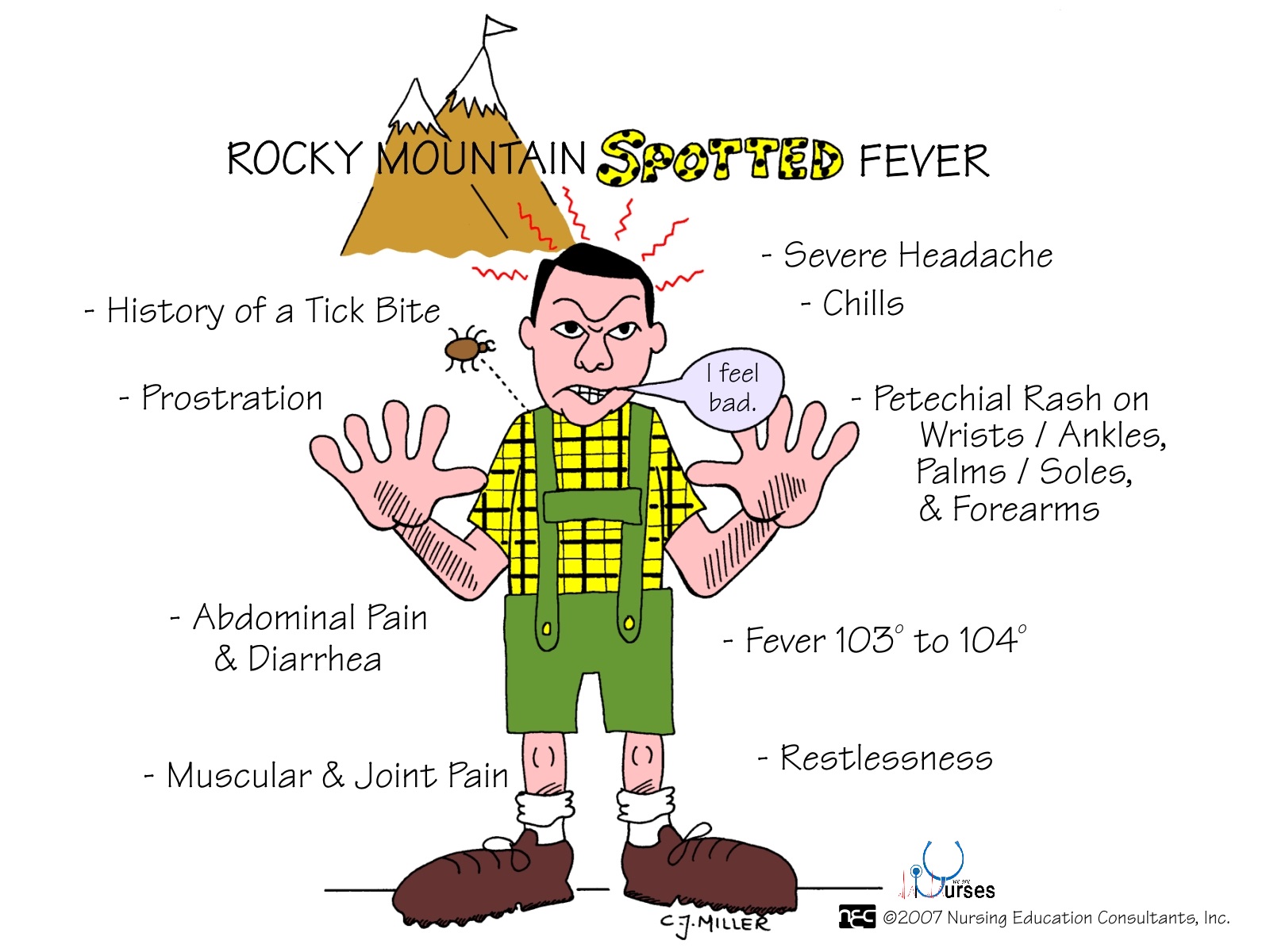

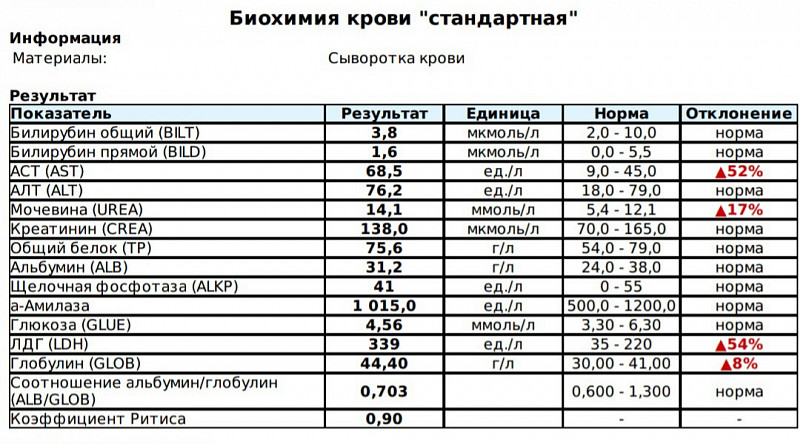 )
)
 If meningitis is suspected, the child should be seen by a doctor immediately.
If meningitis is suspected, the child should be seen by a doctor immediately.